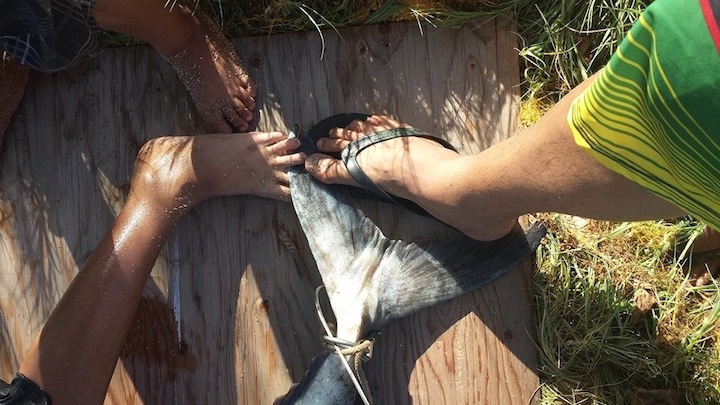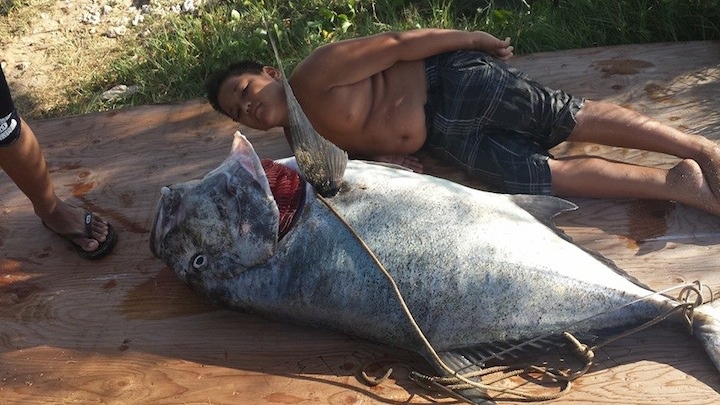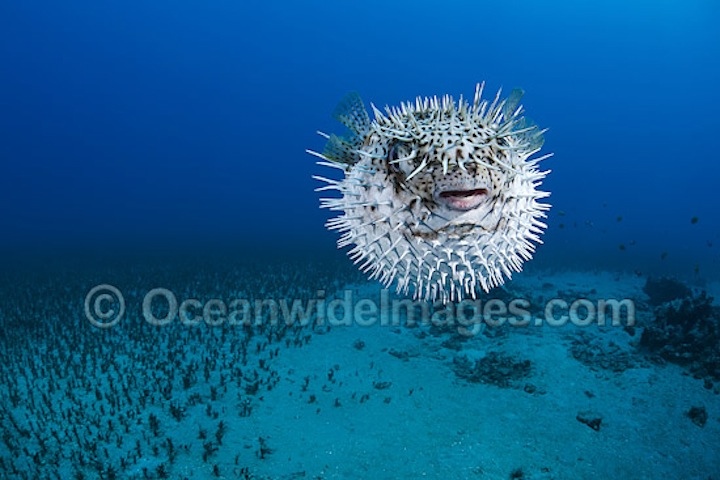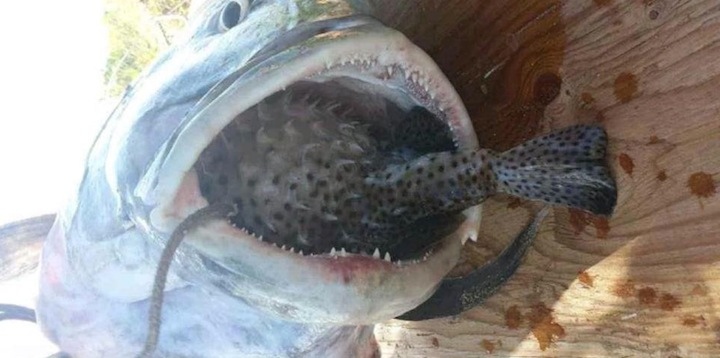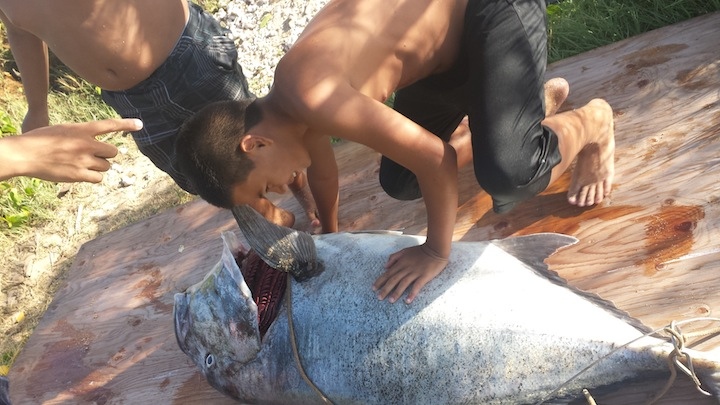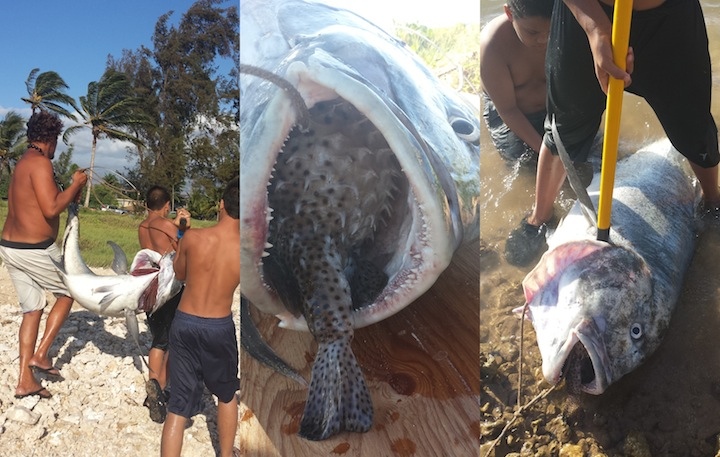
A photo of an ulua choking on a puffer fish has gone viral this week. I interviewed the family that helped bring it to shore and spoke to a marine biologist about the event for some insight. #uluaVSpuffer
It was a hot, sunny Sunday in Kihei. A couple of fishermen were out on the reef throwing net and Christy Kajiwara Gusman’s family was enjoying a quiet beach day out front of the VWF Hall in Kihei. It was August 3rd, the kids last day for some summer fun before going back to school. Around mid-afternoon the fishermen noticed something thrashing and struggling just outside the reef… things were about to get a little more exciting!
“We thought it was a shark at first but the fisherman noticed what kind of fish it was. He called for help and my sons and husband went to help him bring the fish in.”
It took several people to carry the (some people estimate 100 + pounder) to shore. Christy said they don’t know exactly how much the fish weighed.
“My son is 92 lbs and we took a photo by my husbands size 13 slipper. It was big.”
The ulua was still alive when they brought it to shore. One of the fisherman said he had heard of such a thing happening before but never saw it in real life.
I spoke to my Uncle Leon Hallacher- also a marine biologist at UHH – for some insight into this peculiar and surprising occurrence. He told me that the fish in the ulua’s mouth is actually a “Porcupine fish” – most likely Diodon Hystrix – which is a member of the puffer fish family Diodontidae.
According to Casey Patton from the Florida Museum of Natural History, the porcupine fish was first described in 1758 by Linnaeus. The genus Diodon is derived from the Greek words “di” = two and “odous” = teeth while the species name is translated from Greek as porcupine. The porcupine fish gets its name from the long spines all over its head and body. There are approximately 20 spines in a row between the snout and dorsal fin. (This fish is not listed as endangered or vulnerable with the World Conservation Union.)
They are generally nocturnal and adults usually linger inshore, around areas that offer shelter, like caves, reefs and ledges. The spines only stick out when the fish is inflated. They inflate – expanding their body size by taking in water -when threatened. This porcupine fish felt threatened by its predator, the ulua, and did the only thing in its power to protect itself.
Dr. Hallacher says “Intuitively it seems to me that ulua with a predilection for eating puffers/porcupine fish would not leave a lot of offspring and the behavior would be generally selected against.” A natural occurrence of Darwin’s natural selection process. Science is awesome!
On social media, many people were commenting about puffers being toxic asking “Should people that handle or eat the ulua be careful?” It’s true that puffers secrete a toxic skin substance and are usually considered poisonous but my uncle, who has been a marine biologist in Hawaii for several decades – said, “I am aware of no reports of tetrodotoxin being transferred to the flesh of ulua or any other fish that happen to successfully eat puffers. Somebody eating an ulua should be more concerned about ciguatera which does biomagnify and is common in Hawaii.”
On the flip side, the puffer fish is actually a Japanese delicacy known as ‘fugu’ – people in Hawaii eating it, is not unheard of. Having said that, it’s illegal for restaurants in Hawaii to serve fugu and eating it should be avoided as 7 deaths have been linked to puffer fish ingestion in the state of Hawaii. Consider that even in Japan, fugu can only be prepared by specially certified and licensed chefs, who are trained to safely prepare the fish.
So what happened to the ulua and puffer after the lose-lose battle? … Christy told me one of the fisherman’s friends picked it up. He took photos and shared them with MAUIWatch. I haven’t spoken to the guy yet but apparently they took it to get weighed (people are saying 107 lbs) – after that, your guess is as good as mine…
As to how common an occurrence ‘An ulua choking on a puffer is?’… Dr. Hallacher says “There are anecdotal accounts, in ichthyology textbooks, of this type of thing having been observed before. This is probably not a common occurrence, but again its frequency has not been studied as far as I know.”
The Gusman family had heard their own anecdotal account from an uncle about finding a dead fish floating in the ocean with a dead puffer in its mouth – but it was the first time THEY had seen anything like it with their own eyes! Says Christy…
“It was quite an adventure for the kids on their official last day of summer!!!”
All ulua/puffer photos are courtesy: Christy Kajiwara Gusman – Mahalo for telling your story! What an adventure! #lifesswell



